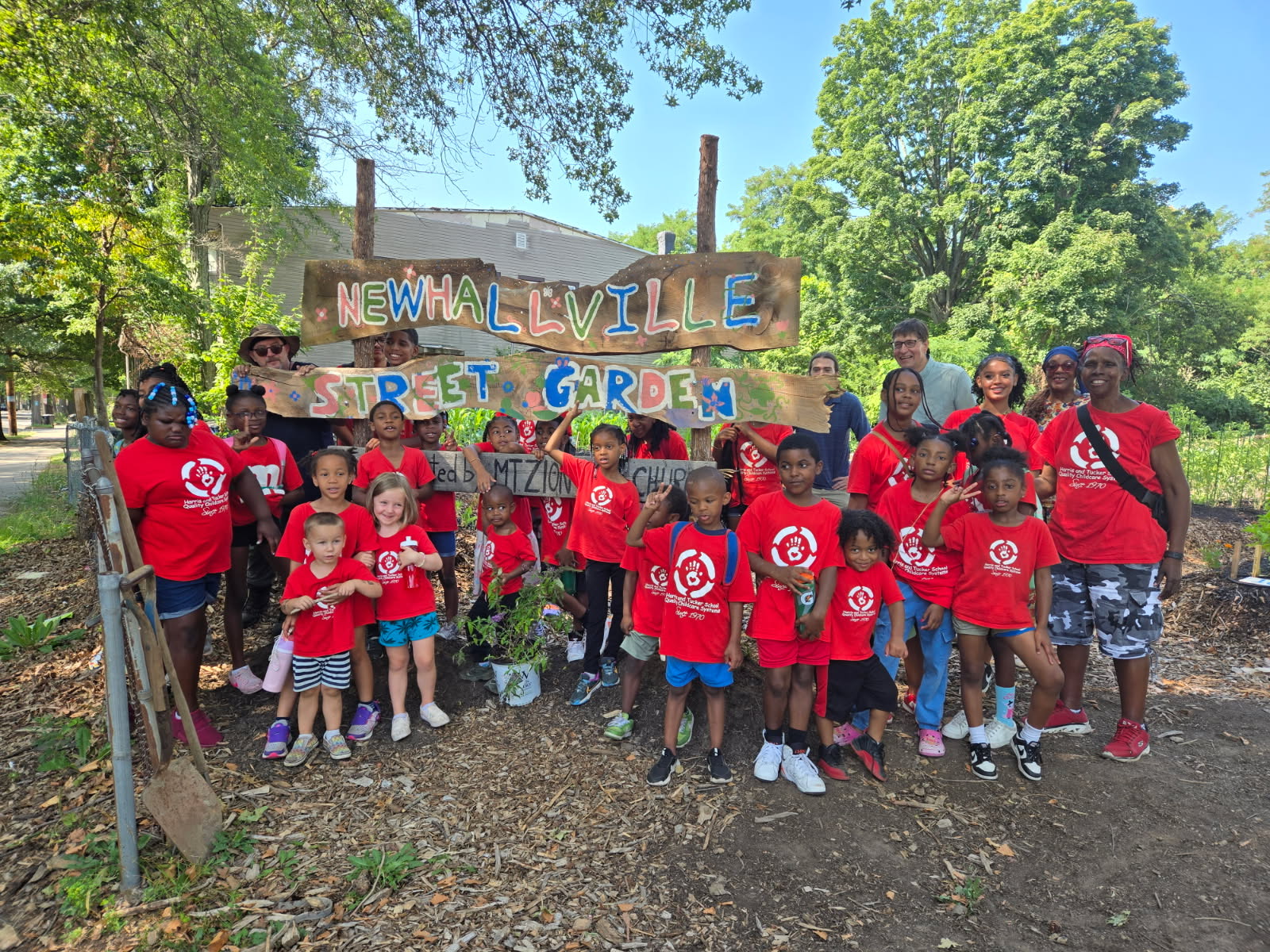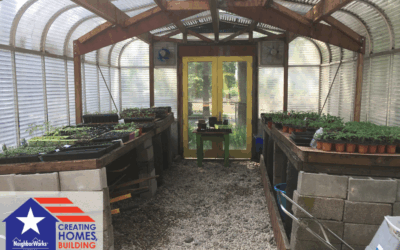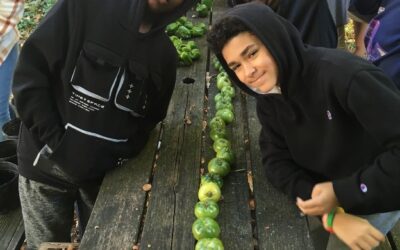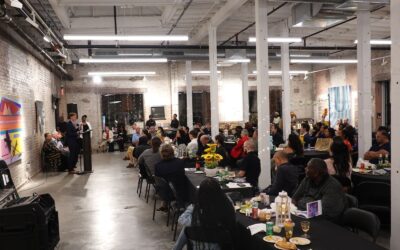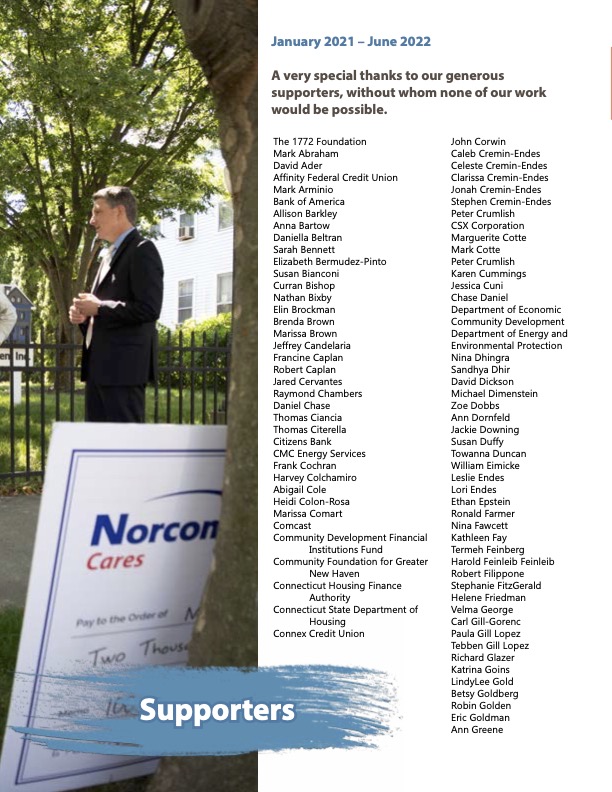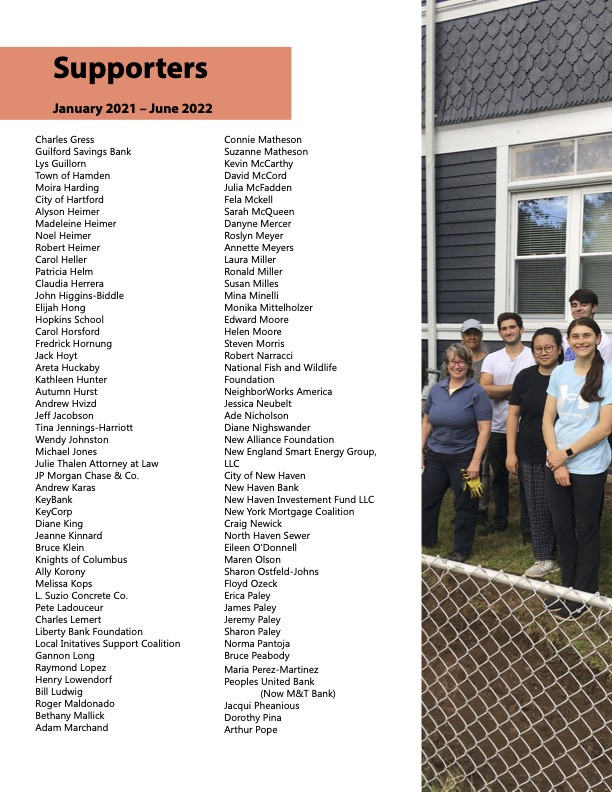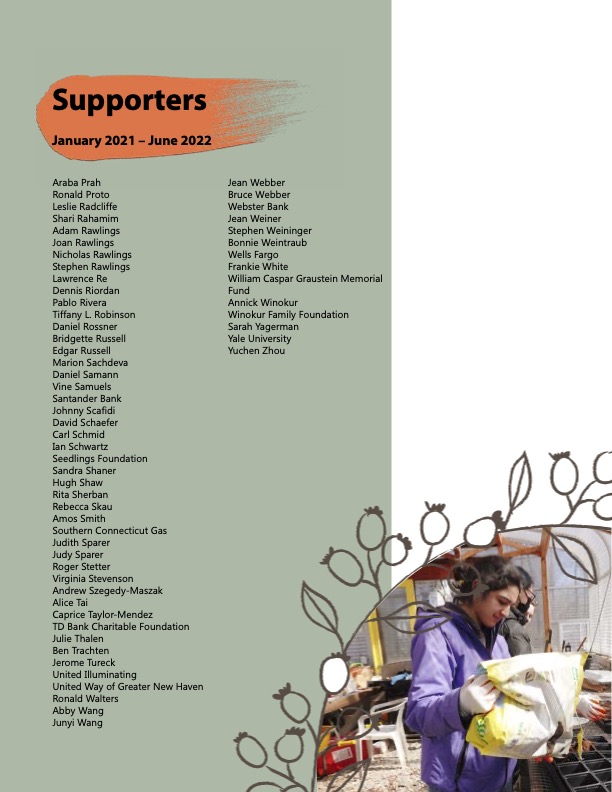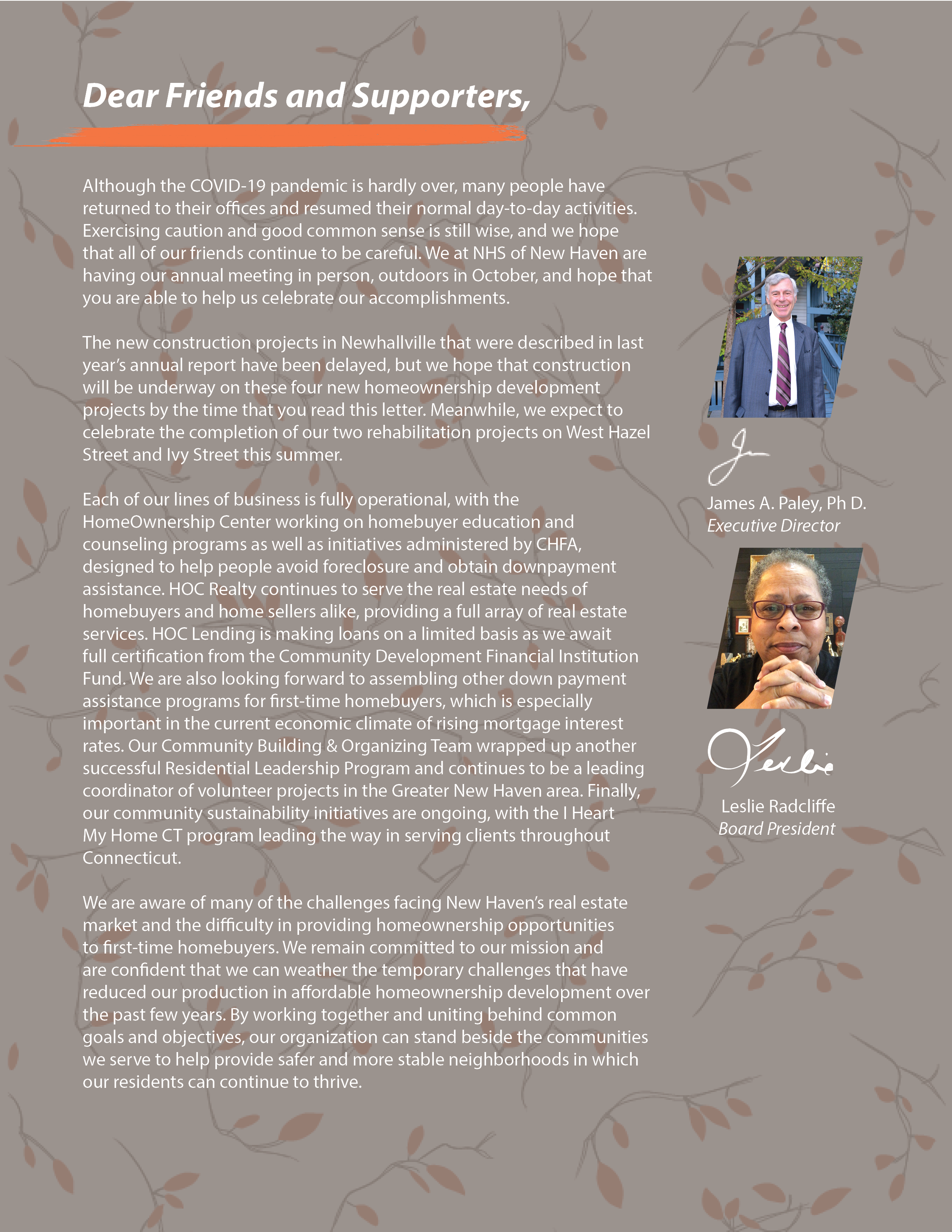This summer was one of the busiest yet for Stephen Cremin-Endes and Adam Rawlings with Neighborhood Housing Services of New Haven’s Community Building & Organizing (CB&O) department. From local collaborations with Inspired Communities (above in red shirts) to international students, our team worked alongside students, residents, and community groups to deepen connections, strengthen neighborhoods, and expand our impact.
Inspired Communities appointed Stacy Maddern from University of Connecticut as the Newhallville STREET Garden – Garden Manager and he brought six interns who worked diligently in making Hugelkulture rows and cultivating and putting into effective production ½ acre at the corner of Ivy Street and Shelton Avenue in the heart of Newhallville.
Ms. Carlotta Clark, Co-Chair of the Newhallville Community Management Team and a City of New Haven Commissioner on the Agency on Aging, led the way in distributing food to five locations, helping to re-imagine how a food pantry operates. The organic growing of food, delivering to food pantries and homes within a three-block radius, ensures that fresh vegetables and herbs go where residents of all ages need it most.
Partnering with Inspired Communities, UCONN and Choate on Food Security
We were proud to serve as the primary community partner for Choate Rosemary Hall’s 2025 Internation Summer Session, which brought international students to New Haven for two two-week camps. Together, we explored the systems that shape food security: where food comes from, how it’s distributed, and what unmet needs exist in our community.
The students visited the Downtown Evening Soup Kitchen, gained insight into the role of food pantries, and dug into our Ivy Street Community Garden and the newly formed Newhallville STREET Garden. They also connected with Pitts Chapel United Free Will Baptist Church and Greg Altieri of Newhallville fREshSTARTs, who works to reimagine food pantries and now helps to deliver more than 1,200 meals a week.
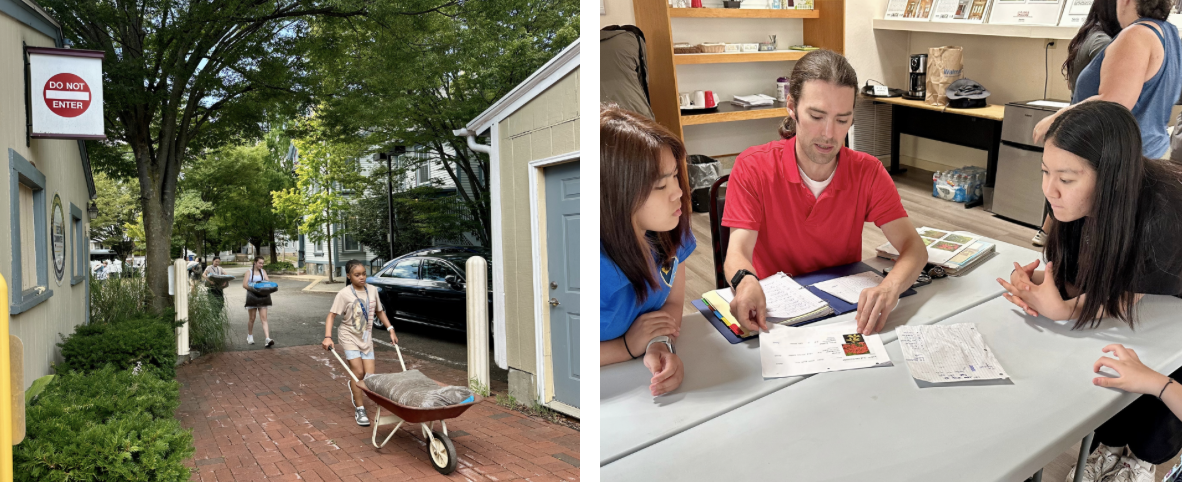
Choate Rosemary Hall students at NHS’s campus moving mulch and learning about designing rain gardens.
Our work together highlighted two essential strategies: redistributing food to reduce waste and distributing fresh produce from community gardens. Students visited food pick-up sites, learned about residents like Brother Born and Melvin, who graciously set-up canopy tents outside their homes as make-shift pantries, and saw firsthand how community-driven solutions are fighting hunger in New Haven.
The session closed with Stephen visiting their classroom for presentations in which students proposed solutions to issues they learned about, including housing, homelessness, and food insecurity.
Building Rain Gardens with Save the Sound
Another major focus of the summer was building rain gardens. With support from Save the Sound and funding from the Connecticut Department of Energy and Environmental Protection (DEEP), CB&O is working to complete 12 rain gardens by October 31st. We are especially grateful to partners Lys Gant and Nicole Davis for their support in this initiative.
The first three rain gardens are already complete:
- 160 Ivy Street – built with the help of Turnbridge recovery program participants
- 171 Ivy Street – supported by Yale FOCUS students and Turnbridge volunteers
- 245 Shelton Avenue – installed next to the Ivy Street Community Garden with both front and backyard systems
Rain gardens capture stormwater that would otherwise flow into sewers, where it can cross contaminate with sewage and pollute waterways, and instead redirect it to feed into the garden. Volunteers contribute a lot with the first step of the task, by beginning to dig. Then, there’s a process for selecting and identifying the appropriate plants that are then laid out on a design template. “There’s an art and science to it,” says Stephen.
This is not just a local issue. When there’s a lot of rain, there’s an overflow of raw sewage, “If you hear about beaches being closed after a rainstorm because of elevated bacteria levels — this is why,” explains Adam. So, this important work not only helps beautify neighborhoods, but also reduces flooding and improves water quality across the region.
Growing Together with Local Partners
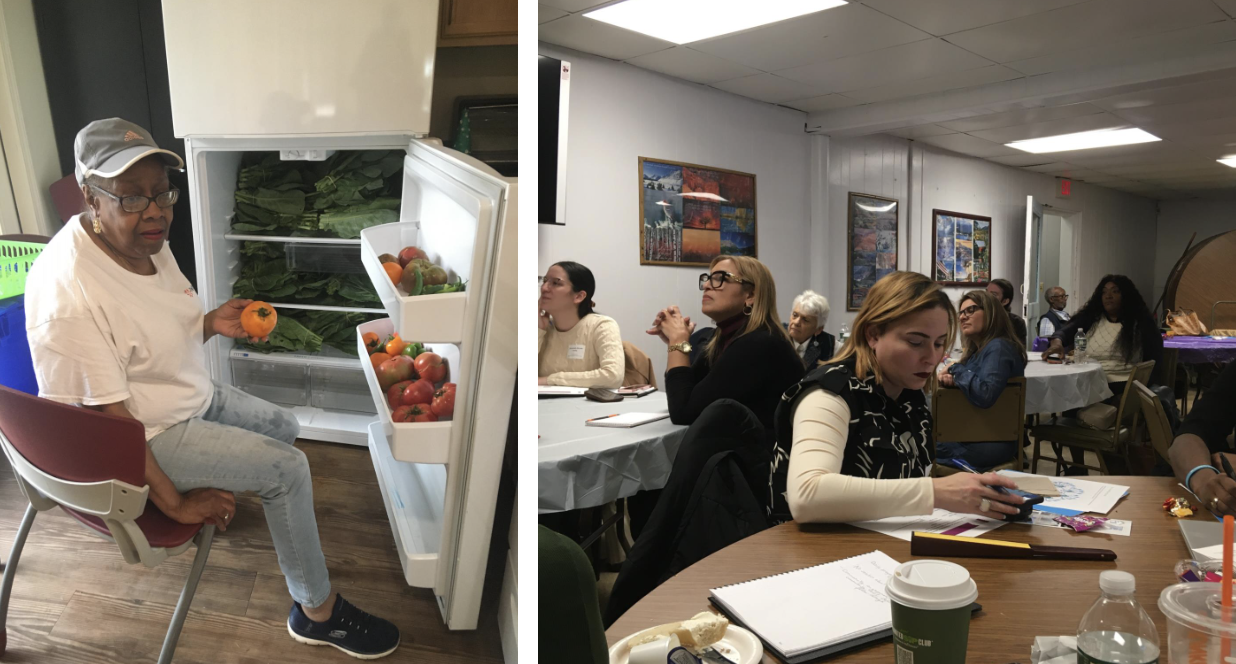
(left) Community Leader Carlotta Clark organizing fresh vegetables from the community gardens. (right) We’ve collaborated with Local Initiatives Support Corporation on 2 statewide community workshops with 60 people in attendance.
The summer also brought exciting collaborations with other community partners:
- Inspired Communities – welcoming preschoolers from Harris and Tucker School to learn in the gardens.
- UConn Interns – six students joined us weekly to build “Hugel mounds,” then design canoe-shaped divots in these mounds, then plant seedlings – all thanks to a Green Fund grant.
- A special thanks to our neighbor Amado, who generously provided water access for our growing spaces and carefully watered the plants in the early morning and late afternoons.
- New Haven Peace Garden – CB&O contributed soil, labor, and even transported water by the bucket to help this community project thrive.
- CPEN’s Learning Corridor – Founder and President of CPEN, Doreen Abubakar, offered the help of “Youth at Work” students, who live in the neighborhood, to assist in the Newhallville STREET Garden on Monday and Wednesday afternoons for ten weeks of the summer.
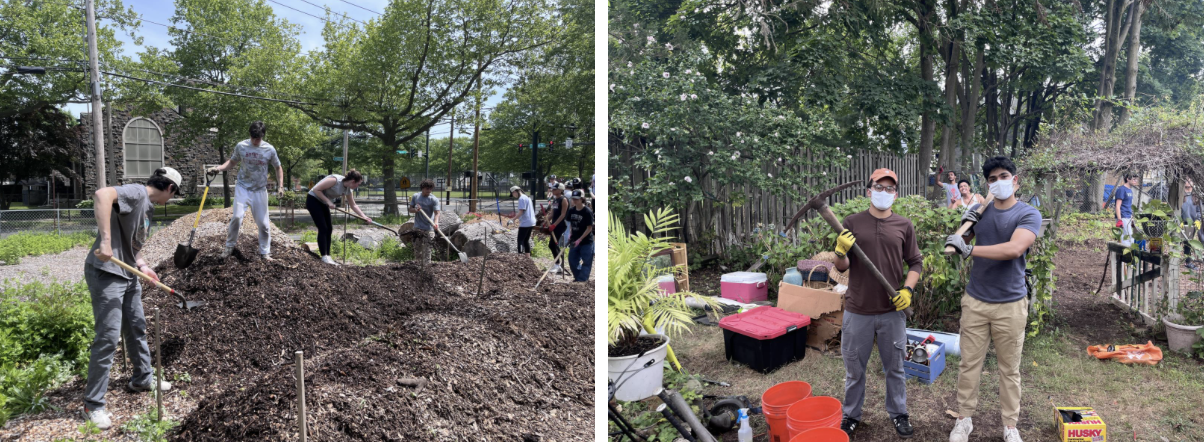
(left) Hopkins Senior Service Week volunteers building hugel mounds in STREET Garden. (right) Yale FOCUS volunteers clearing out an old shed and backyard to make way for a garden.
A Summer of Impact
From planting rain gardens to rethinking food systems, this summer demonstrated the power of collaboration. Students, neighbors, and volunteers enjoyed working side-by–side with residents and cultivated connections. This work is located in close proximity to where NHS has and continues to develop its affordable homeownership projects, which move us toward our goal of helping residents live in thriving communities.
The Community Building & Organizing department believes in the power of building connections and lasting relationships. By helping one neighbor at a time, cultivating one garden bed at a time, and growing one partnership at a time, our roots continue to grow and expand in the neighborhoods we serve.

